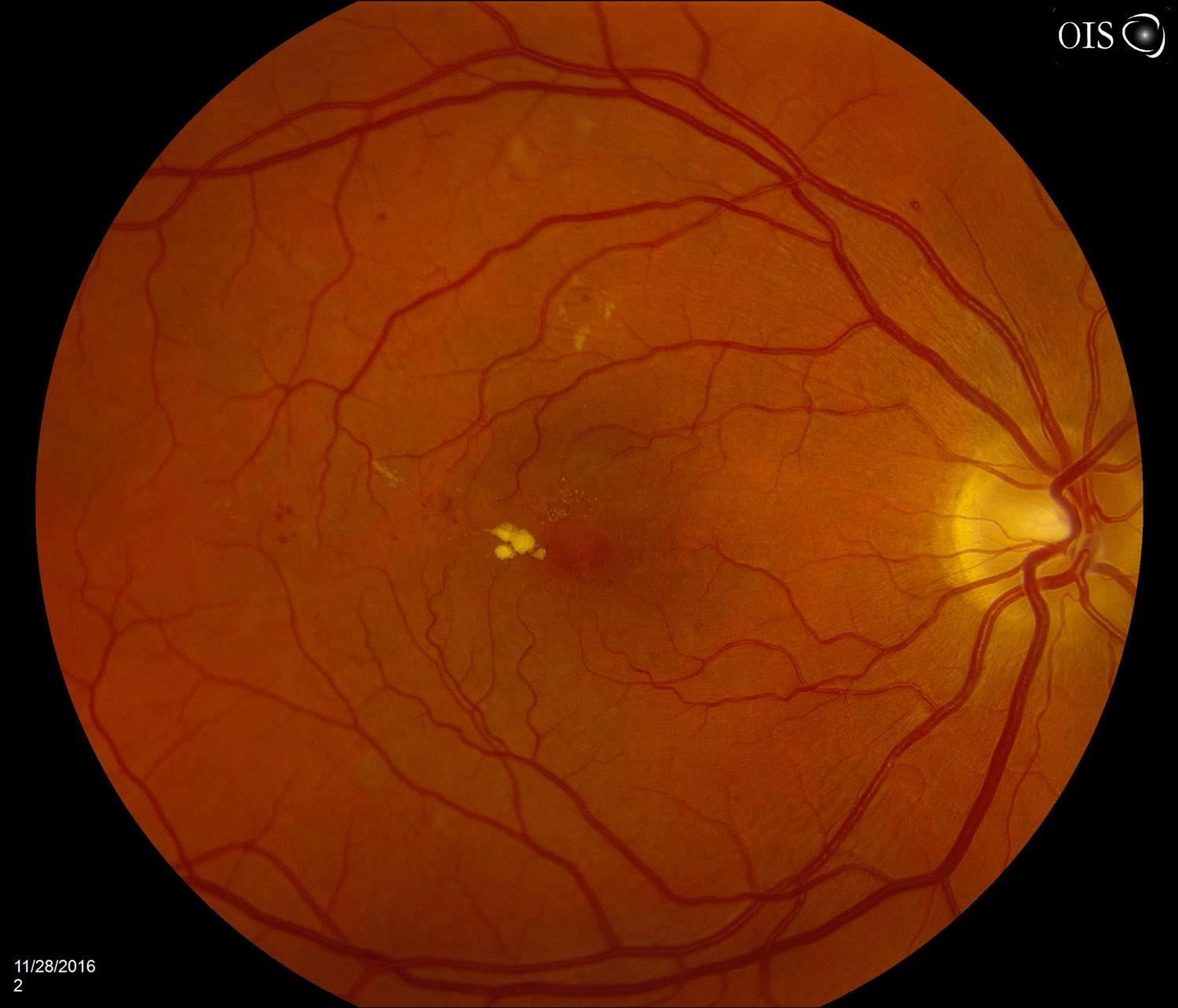Post hoc analysis: Protocol V provides more practical DME guidance for clinicians
Three risk-related baseline factors identified by this analysis may be associated with a potential need for injections.

A post hoc analysis of data from DRCR Retina Network Protocol V provides insight on outcomes when eyes with center-involved diabetic macular edema (CI-DME) and good visual acuity are managed with initial observation and treated with anti-VEGF therapy only if vision worsens.
The findings were reported in a paper published in JAMA Ophthalmology [Glassman AR, et al. JAMA Ophthalmol. 2020;138(4):341-349] and reviewed by Carl W. Baker, MD, at the 2020 virtual meeting of the American Academy of Ophthalmology.
Baker

Protocol V randomly assigned eyes with CI-DME and VA 20/25 to initial management with intravitreal aflibercept (Eylea), focal grid laser, or observation. Eyes in the laser and observation arms were to receive aflibercept only if they had a decrease in visual acuity meeting protocol-specified criteria.
At the end of the 2-year study, mean VA was 20/20 in the three randomized arms. Among the 236 eyes initially randomized to observation, two-thirds did not require anti-VEGF therapy. Within the latter subgroup, median VA at 2 years was also 20/20, and 31% had spontaneous resolution of their DME. Eyes in the observation group requiring aflibercept still achieved good vision at 2 years.
Analyses done to identify baseline characteristics associated with receipt of treatment for DME after initial observation identified three factors that related to DME severity in the study eye, retinopathy severity in the study eye, and need for treatment of DME in the fellow eye.
“Based on the primary endpoint results from Protocol V that showed no difference in vision outcomes between eyes treated initially with aflibercept and those with treatment withheld until vision worsened, many clinicians and patients might choose initial observation for eyes with CI-DME and good visual acuity,” said Baker, private practice, Hilton Head Retina Institute, Hilton Head Island, South Carolina.
Fundus image of diabetic macular edema.

“The post hoc analysis provides more practical guidance for clinicians. The three risk-related baseline factors identified by this analysis—higher levels of retinopathy, DME requiring treatment in the fellow eye, and greater OCT thickness—are associated with a potential need for injections and can be useful when clinicians are deciding what treatment strategy may be best for their DME patients with good vision.”
Follow-up in Protocol V for eyes in the observation arm began with visits at 8 and 16 weeks and then continued at 16-week intervals unless VA declined. Treatment with aflibercept was initiated if E-ETDRS VA decreased ≥10 letters from baseline at any visit or by 5 to 9 letters at two consecutive visits 4 weeks apart. For eyes showing a 5- to 9-letter loss at one visit that was not sustained at the follow-up visit, the follow-up interval was decreased to every 8 weeks if CST worsened by ≥10% from the preceding visit or exceeded 400 µm,. If the eye still did not meet the VA criteria for initiating aflibercept, the follow-up interval was doubled to the previous schedule if CST was stable or improved and halved again if the CST had worsened
Baker noted that with following of this DRCR algorithm, two-thirds of the observation group never required injections over 2 years and the mean vision was the same as eyes that were initially treated with aflibercept.
“Even in the eyes that had worsening vision to the point of requiring aflibercept injections, the median visual acuity was 20/25 at the 2-year end-point of the study. These eyes required fewer injections over the 2-year course of the study than the group initially randomized to aflibercept,” Baker said.
He stated that it is not fair to compare VA in the subgroups of eyes in the observation group that did and did not receive aflibercept because the eyes that were treated needed to have vision loss to quality for aflibercept.
Risk factors for requiring treatment
An analysis to identify predictors of receiving aflibercept among eyes managed initially with observation looked at nine baseline variables, of which three were found to be significant. The strongest risk factor was having a non-study eye that was receiving or was planned to receive treatment for DME within 4 months of study enrollment. A total of 92 eyes were in this subgroup, and they had a 2.55-fold greater likelihood of needing aflibercept in the study eye compared with eyes that were not receiving binocular treatment for DME (P <.001).
Eyes with a baseline Diabetic Retinopathy Severity Score ≥47 (moderate severe nonproliferative diabetic retinopathy or worse) (n=80) had a 2.22-fold increased risk of receiving aflibercept compared with eyes entering the study with less severe diabetic retinopathy (P<.001). An analysis of the impact of baseline CST showed that eyes with a Zeiss-Stratus equivalent ≥300 µm were approximately twice as likely as eyes with less thickening to need aflibercept (P<.003)
Baseline factors not associated with receipt of aflibercept among the eyes initially managed with observation were gender, age, race/ethnicity, HbA1c, and visual acuity prior to DME treatment.
Baker outlined several limitations of the analyses. He noted that because they were conducted post hoc and multiple characteristics were evaluated, some of the associations between baseline features and receipt of aflibercept could have been identified due to chance.
In addition, treatment decisions were guided by VA obtained from E-ETDRS testing following protocol refraction, which could differ from VA measurements taken in clinical settings. Finally, the analysis does not provide information on the group initially treated with laser.
Carl W. Baker, MD
E: eyedude2@paducaheyes.com
Baker receives grants for clinical research from Regeneron and other companies marketing products for the treatment of DME.
Newsletter
Keep your retina practice on the forefront—subscribe for expert analysis and emerging trends in retinal disease management.